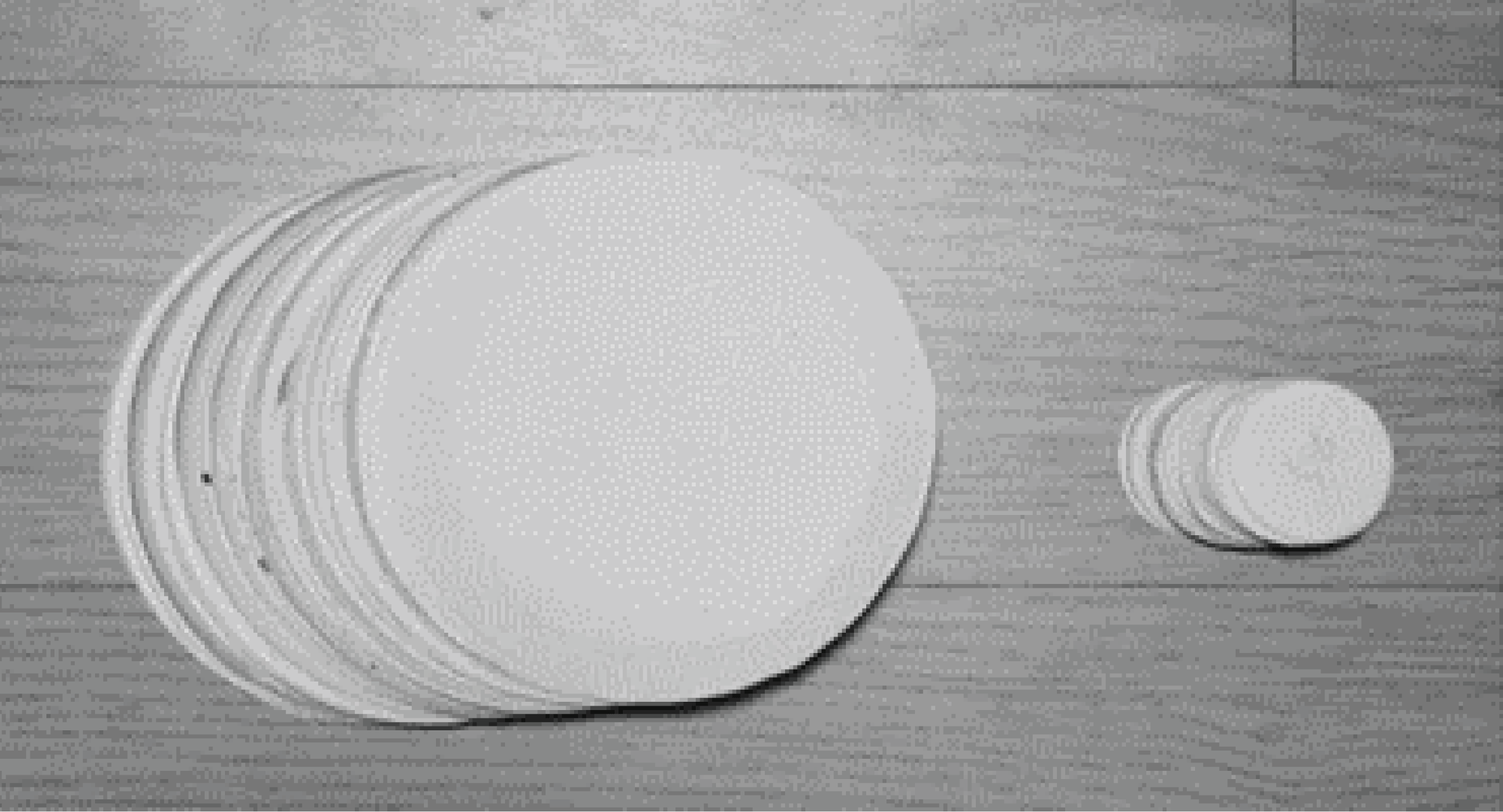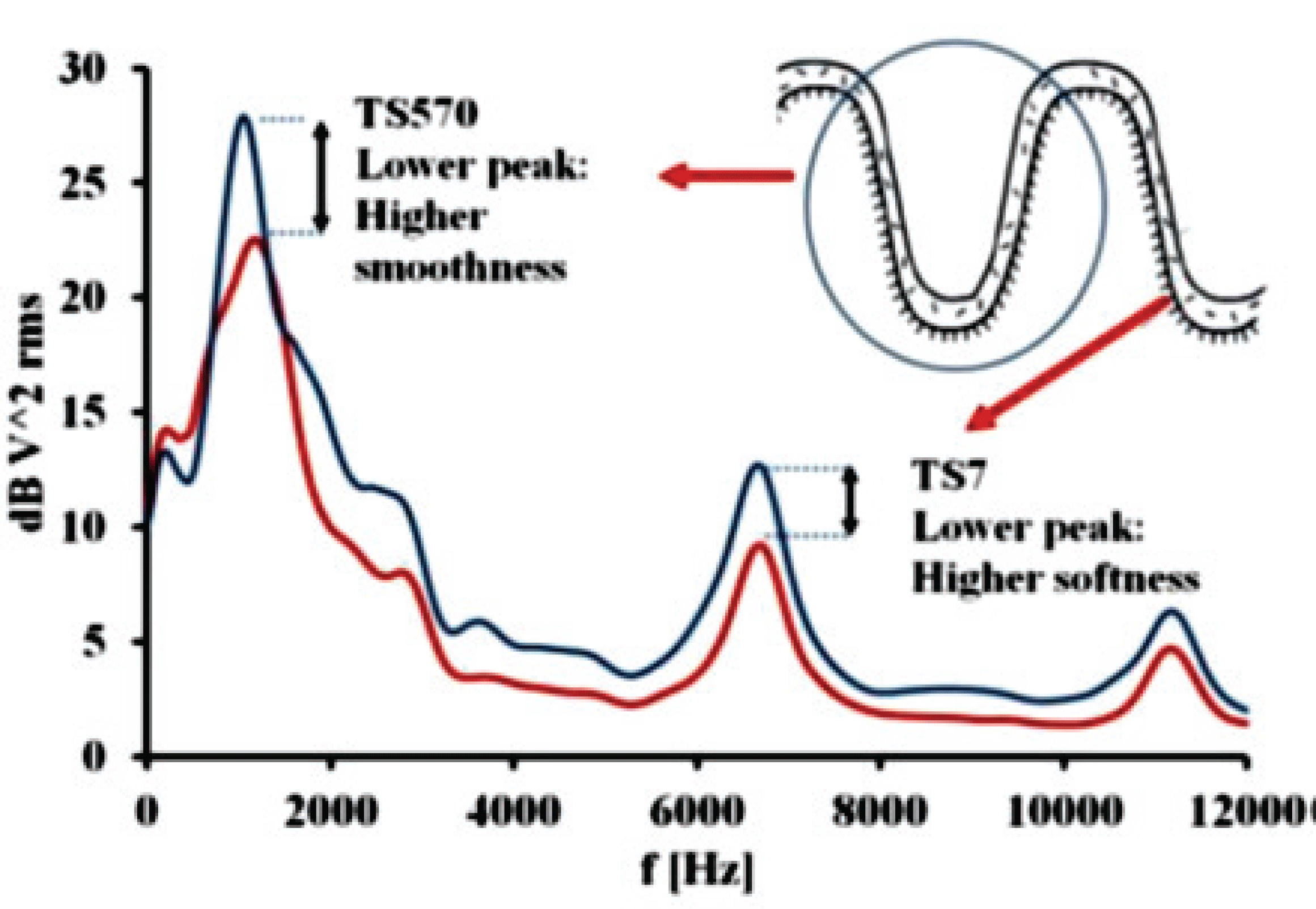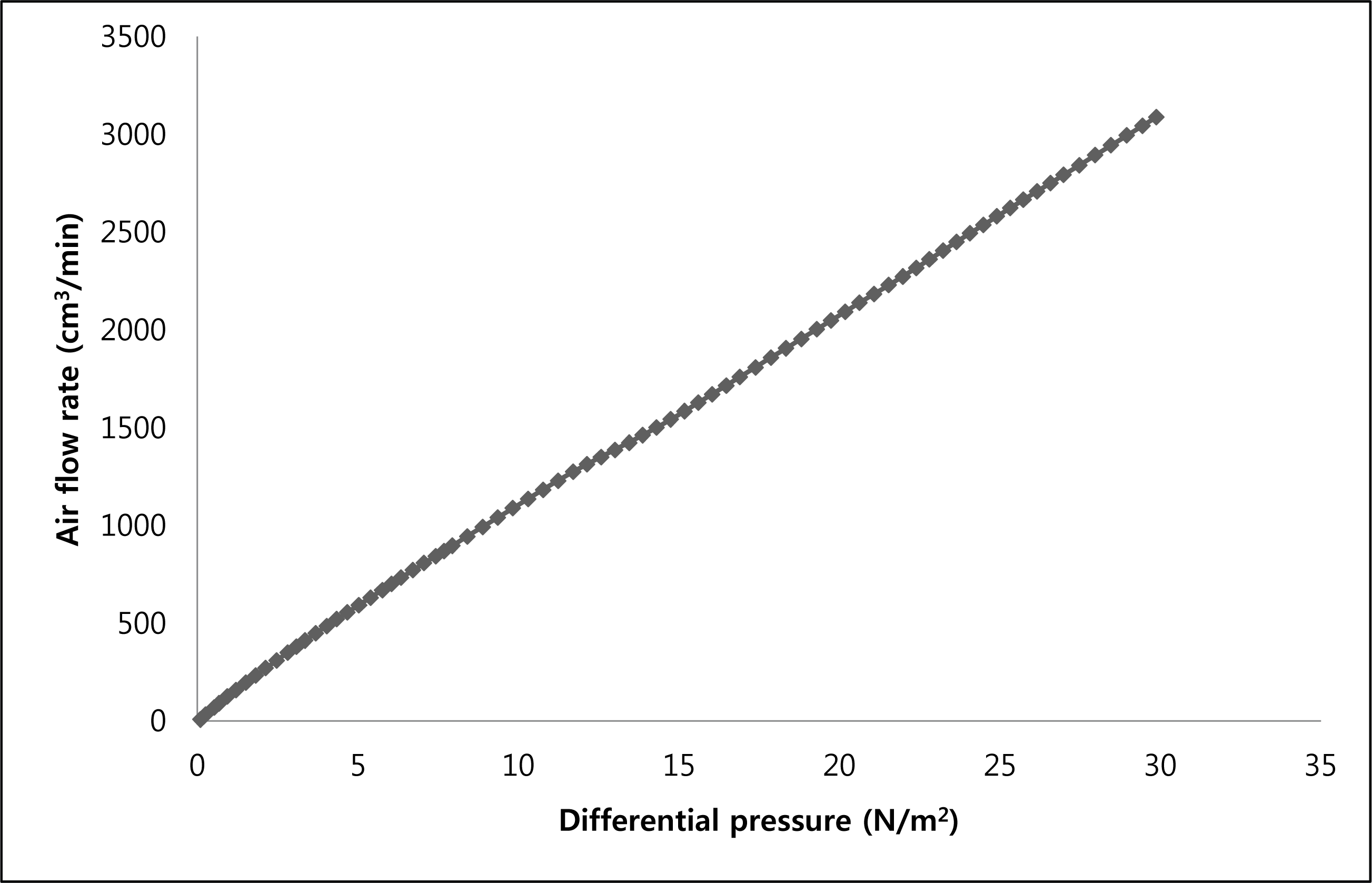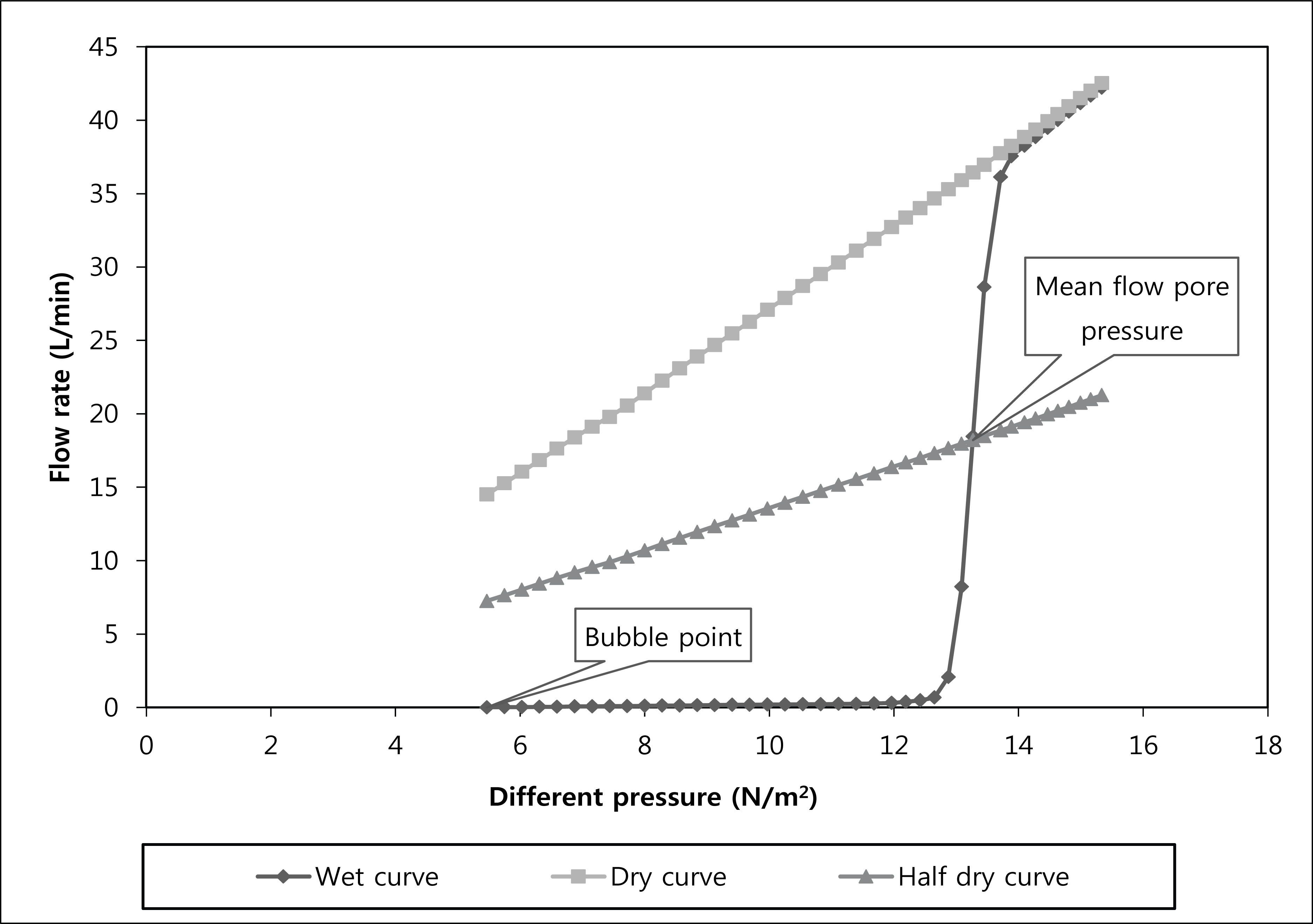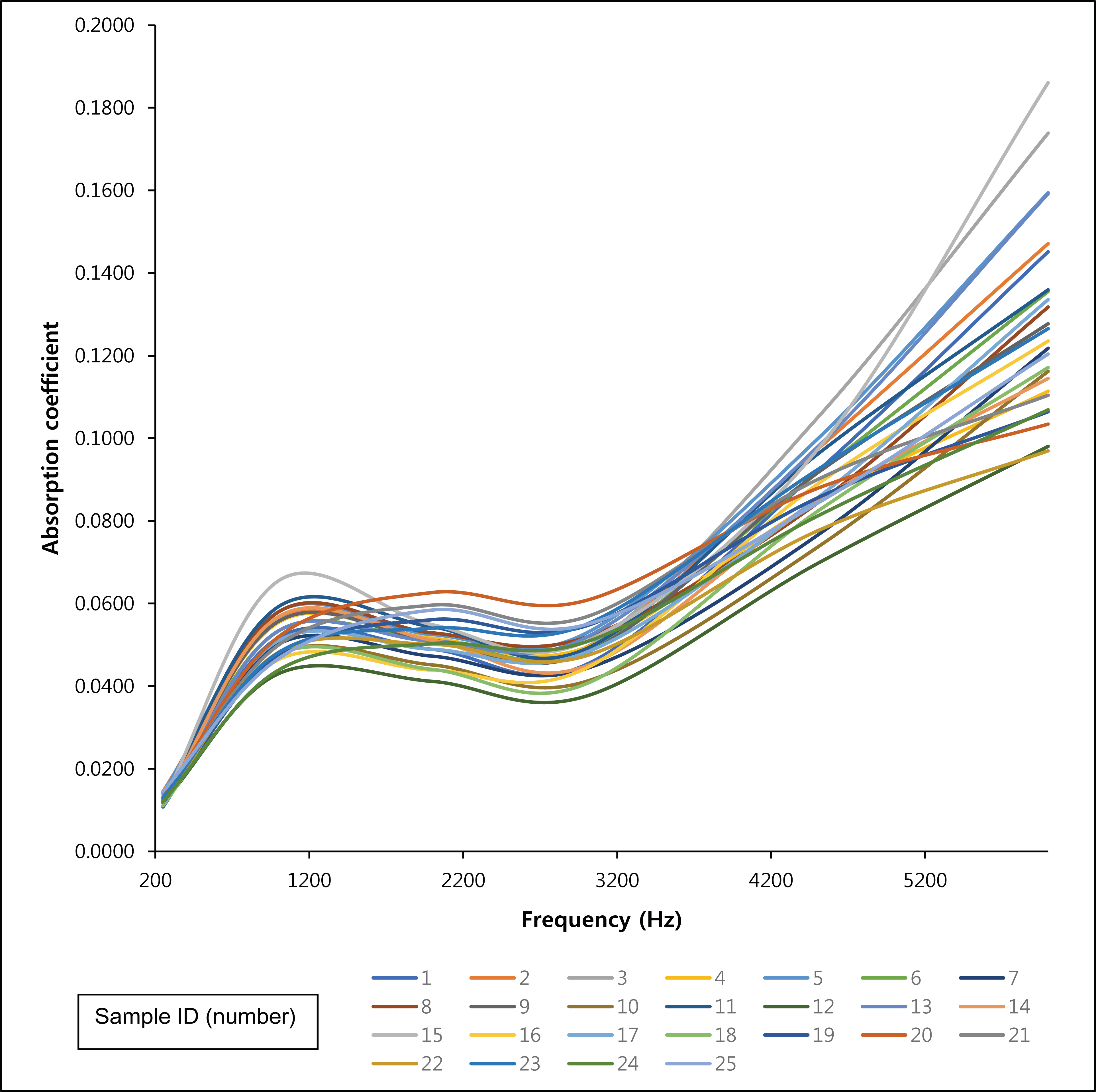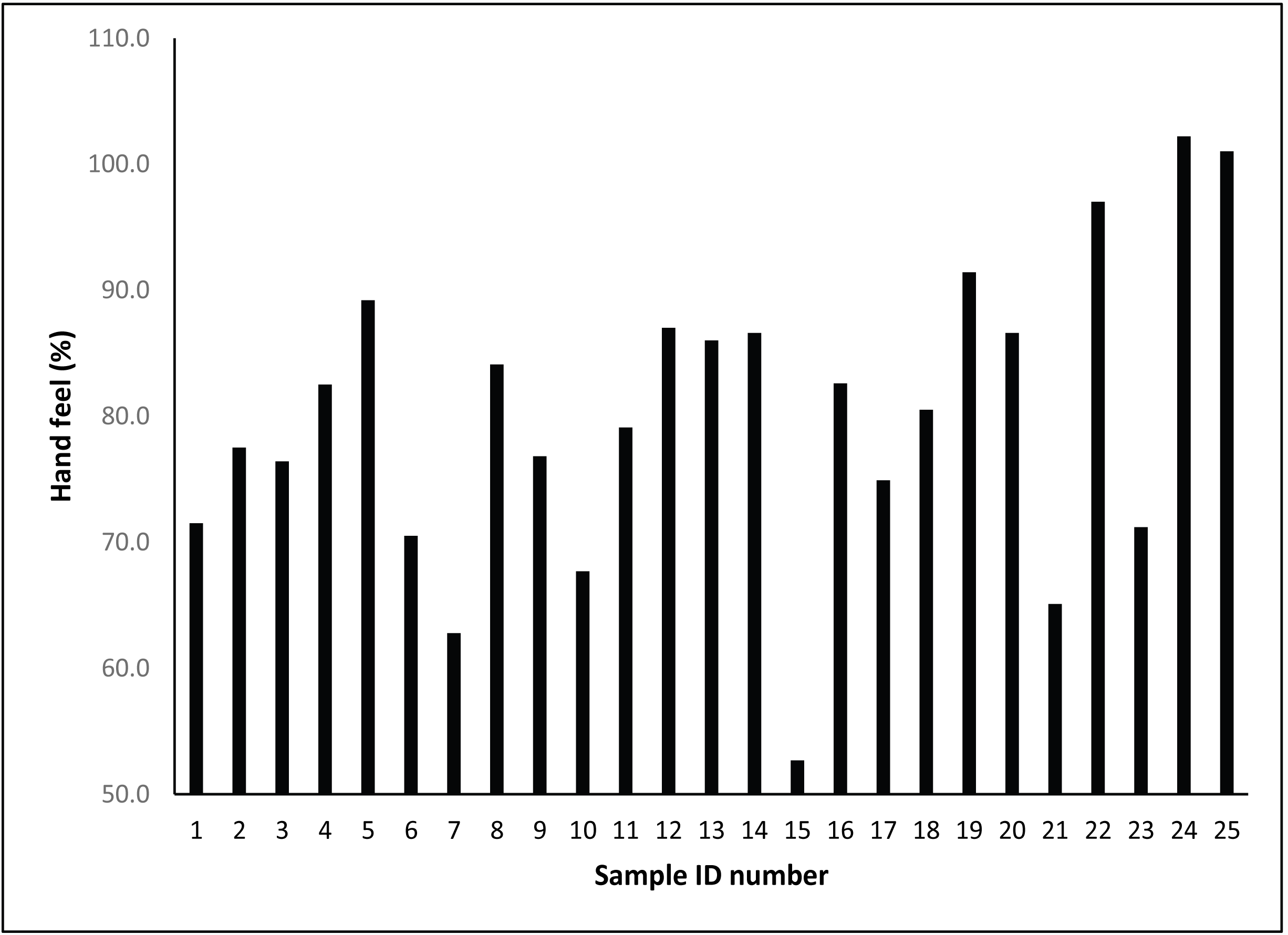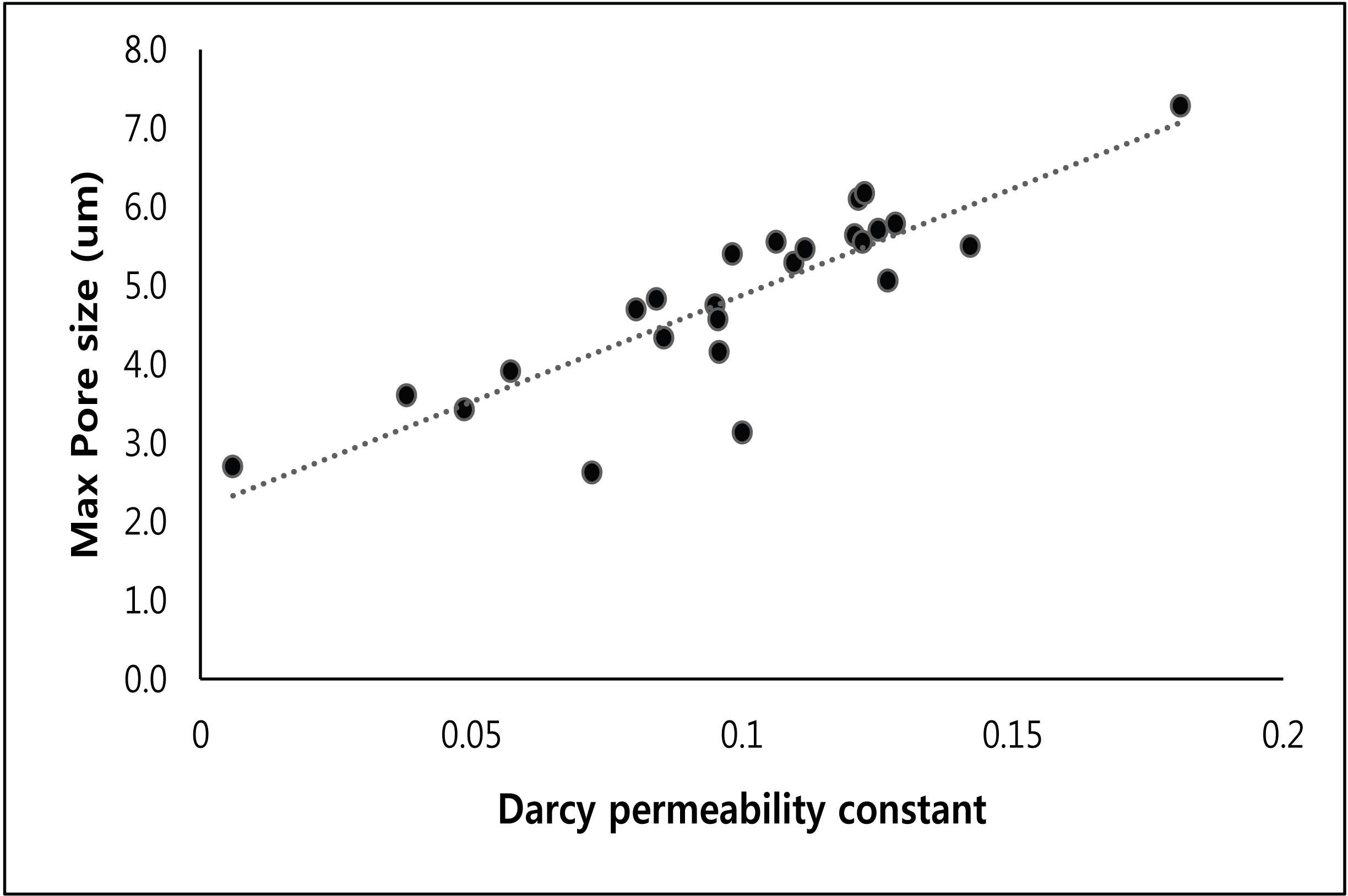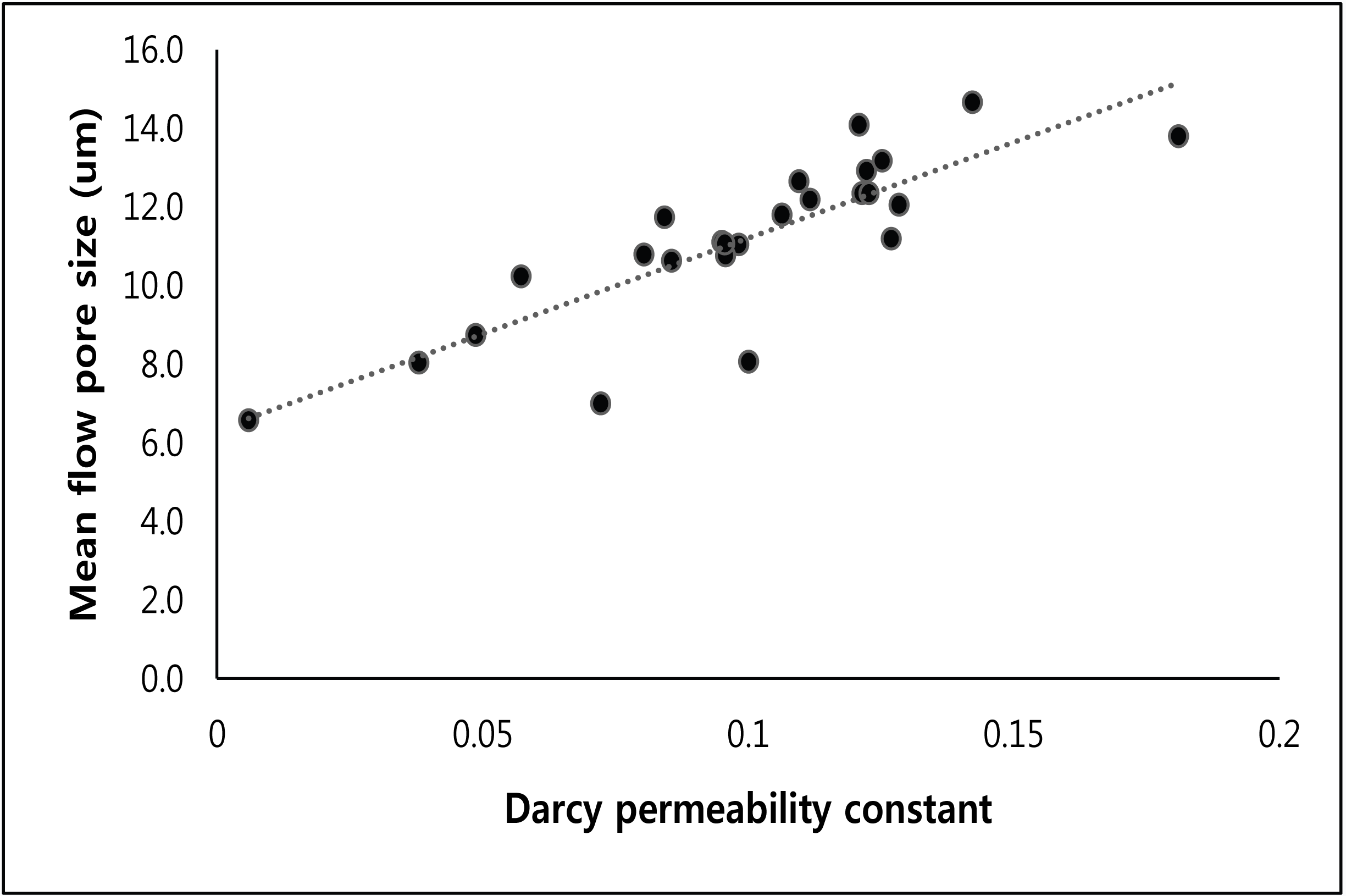1. INTRODUCTION
It is hard to find proper wallpaper to improve residential environment. There are many factors, such as the thermal properties, indoor air quality, lighting environment and sound properties in a room, influencing on selecting wallpapers. Recently people who spend more time in a house are getting interested in natural wallpaper because of the disease prevention of sick house syndrome, rhinitis and atopy etc., and improvement of indoor air quality.
The natural wallpapers are classified into fiber wallpaper and the Korean traditional wallpaper, Hanji, made from paper mulberry and a hibiscus etc. It is known as anti-bacterial, deodorizing and humidity control.
Recently, people are interested in the pleasant sound environment for the modest indoor living conditions and the sound absorption properties of the wallpaper. Meanwhile, the acoustic wallpapers made of fabric and urethane are produced. (Choi and Bang, 2012; Yoon and Oh, 2005; Huang et al., 2014; Oh and Yoon, 2005), and there are many previous studies on Hanji paper (Yoon et al., 1996; Yoon et al., 1997; Jeong et al., 2004; Jeong et al., 2005). In addition, studies on the improvement of sound absorption performance of wood based materials have been actively carried out (Won et al., 2015; Kang et al., 2015; Kang et al., 2018; Kang et al., 2018).
However, the research on improving the sound absorption performance in natural wallpaper has not sufficiently conducted. In this study, the natural wallpapers available in the market are used to measure the sound absorption property, hand feel, air permeability and pore size. The correlation between sound absorption property and hand feel, air permeability and pore size of conventional wallpapers and Hanji wallpaper was analyzed in order to improve sound absorption property of Hanji.
2. MATERIALS and METHODS
25 samples were randomly picked from a sample book provided by Korean paper makers and each sample was cut into 29 mm and 99 mm in diameter for the measuring sound absorption rate as shown in Fig. 1.
The sound absorption rates of the wallpapers in the frequency range of 50 Hz ~ 6400 Hz were measured by transfer function method according to ISO 10534-2 and KS F 2814-2 using impedance tube (B&K company, kit type 4706), pulse analysis equipment and a spectrum analyzer (B&K company), which were shown in Fig. 2. The diameter of impedance tube for the measurement of sound absorption rate was 29 mm for the high frequency range of 500 Hz ~ 6400 Hz and 99 mm for the low frequency range of 50 Hz ~ 6400 Hz because the diameter of impedance tube was limited by frequency.
The temperature, relative humidity and atmospheric pressure during measurement were 24.80 °C, 48.00 % and 1013.25 hPa, and moreover, the velocity of sound, air density and acoustic impedance were 346.04 m/s, 1.183 kg/m3 and 409.2 Pa/(m/s), respectively.
As shown in Fig. 3, hand feel (HF, %) of wallpaper was analyzed by tissue softness analyzer (TSA) manufactured by Emtec (Germany). This equipment can measure the parameters of softness and smoothness within 30 s. The peak of spectrum was as shown in Fig. 4, TS7 peak (in dB V2rms) at 6.5 kHz represented softness while TS750 first peak (in dB V2rms) at 750 Hz represented structure (creping, embossing). HF was calculated by the equation, developed by Emtec (Germany), after the creping and embossing were combined with stiffness (D), thickness and basis weight.
The gas permeability was calculated by Darcy’s permeability constant (Anderson, 1966) after real-time flow rate changes was measured by capillary flow porometer (Model : CFP-1100AE, Porous Material Inc, Ithaca, USA) as the pressure and flow rate were increasing (Fig. 5).
where,
Pore size were measured by the method of capillary flow porometry according to ASTM F316-03 using a capillary flow porometer (Model: CFP-1100AE, Porous Material Inc, Ithaca, USA). The measurement was conducted in two steps. In first step, after the pressure of air was applied in the vertical direction of dried sample, the flow rate was measured, at this time, a graph of the flow against pressure was called ‘dry curve’. In second step, after samples were soaked in the wetting liquid Galwick (Porous material Inc. U.S.A, surface tension : 15.9 N/m) with little volatility and the low surface tension, the wetting liquid soaked inside pores was forced out by applying air pressure, at this time, a graph of the flow against pressure was called ‘wet curve’. There had been sections in that the air inside pore could not get out due to soaked wetting liquid as air pressure being increasing in wet curve until pressure reached a certain level. The pressure when the wetting liquid in the largest pore starts to get out is called a bubble point. The relation between bubble point and pore size was as the Young–Laplace equation.
Until the time that wet curve and dry curve met, the pressure to be followed changing of flow had been measured during air pressure being increased after bubble point was measured, during this time the wetting liquid soaked inside pore was totally forced out, which means that the measuring of pore size was finished. Moreover, the graph of pressure and flow was presented as an imaginary line when flow in measured dry curve was considered as 50 %, this was called ‘half dry curve’. The pressure at which wet curve and half dry curve were met was called mean flow pore pressure (Fig. 6), and was calculated from the Young–Laplace equation. [2].
where,
3. RESULTS and DISCUSSION
The sound absorption rates of specimens are shown in Fig. 7. The sound absorption rates of natural wallpapers showed 0.1 under 3.2 kHz, increased by 15 % above 3.6 kHz, and increased by 20 ~ 30 % above 5 kHz, which indicates that the sound absorption rates are increasing from low frequency band to high frequency band which shows a typical characteristic of porous sound absorber. The noise reduction coefficient (NRC) of specimens are shown in Table 1. NRC displayed low values as value being 0.04.
According to KS F ISO 11654 (2003), acoustics- Sound absorbers for use in buildings-rating of sound absorption as NRC (noise reduction coefficient, mean of sound absorption rates at 250 Hz, 500 Hz, 1000 Hz and 2000 Hz), below 0.10 is no grade, 0.15 ~ 0.25 is E grade, 0.3 ~ 0.55 is D grade, 0.60 ~ 0.75 is C grade, 0.80 ~ 0.85 is B grade, and 0.90 ~ 1.00 is A grade. In this study, the Korean wallpaper was revealed to be ‘no grade’. It is generally recognized that the sound absorption rate of wallpaper is relatively low because of its thin thickness and smooth surface so that there is a limit to satisfying the performance of the sound absorbing material alone by the wallpaper itself (Kang et al., 2005; Kang et al., 2007).
Hand feel of specimens measured by TSA is shown in Fig. 8. The higher value of TS750 was the rougher hand feel. Although same products manufactured from the same wallpaper, the values of TS750, TS7 could be different because the pattern of wallpaper and the types of additives during manufacturing were different, thus the HF among same products was different because HF was calculated by the function using the difference in TS750 and TS7 (Table. 1). However, the correlation between HF and sound absorption rate did not be found.
As shown in Fig. 9 and 10 the permeability was increased as the pore size being larger in this study, which is agreement with the conclusion of other researcher (Anderson WA, 1966; Dias et al., 2012).
The correlation between the permeability and the sound absorption rate, pore size is presented in Fig. 11 to Fig. 16, respectively. The trend that the sound absorption rate was increasing as the permeability being lower and the pore size being smaller was shown, which could be due to the straightness of high frequency because high frequency easily passed throughout inside specimens when pore size was smaller. It was hypothesis that the wallpaper with low permeability and narrow pores was made of the thin fibers, which formed complicated and irregular intertwined pore structure, inside the paper. Sound loss became more because sound diffused reflection occurred inside this structure and moreover the occurring opportunity of sound diffused reflection was more than that of thick fiber during sound got through the paper. This increased that sound energy converted into thermal energy when sound contacted with internal fiber, which increased sound absorption. This was similar with the results of other researchers (Choi and Bang, 2012; Yoon and Oh, 2005; Huang et al., 2014; Oh and Yoon, 2005).
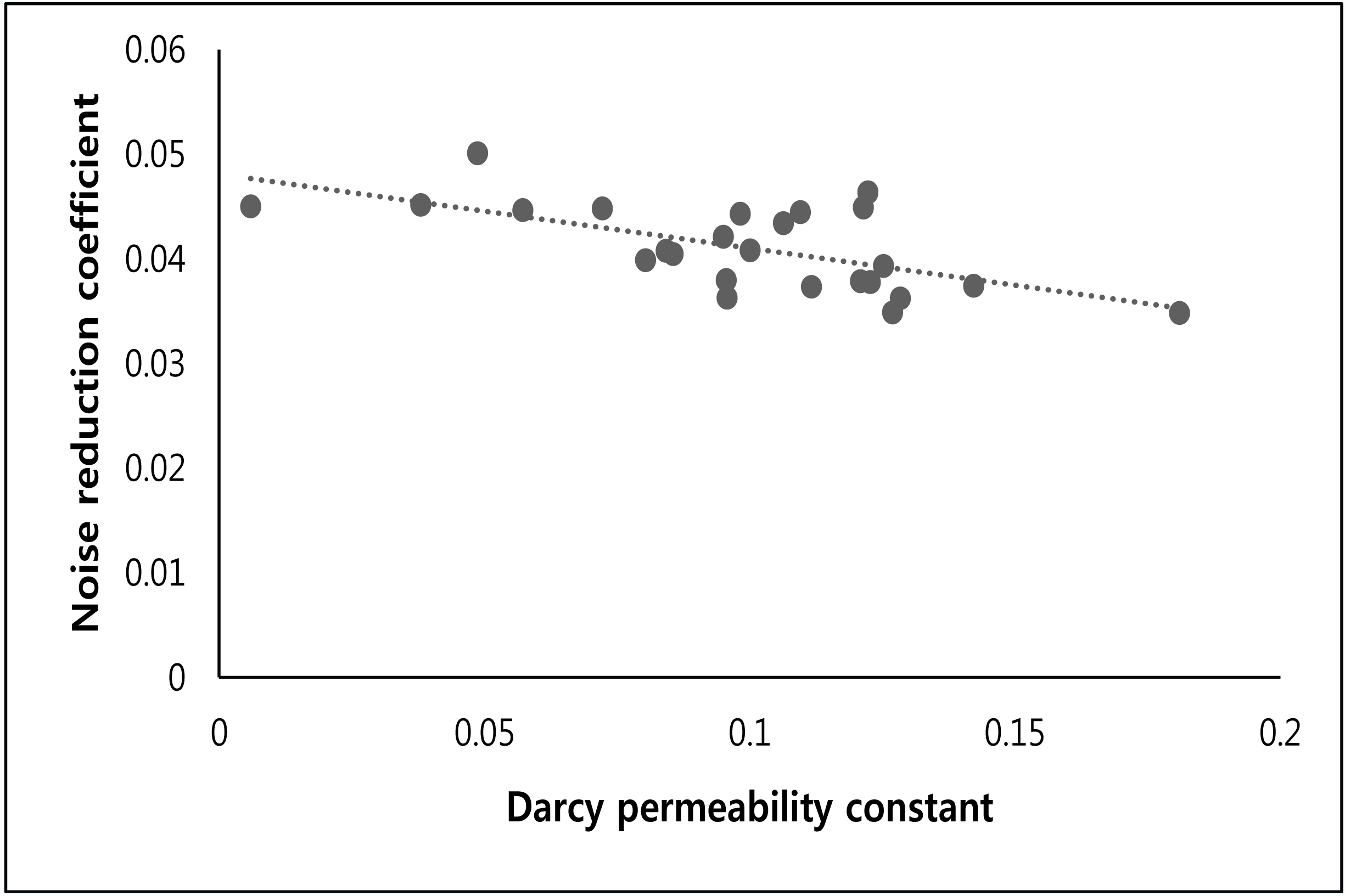
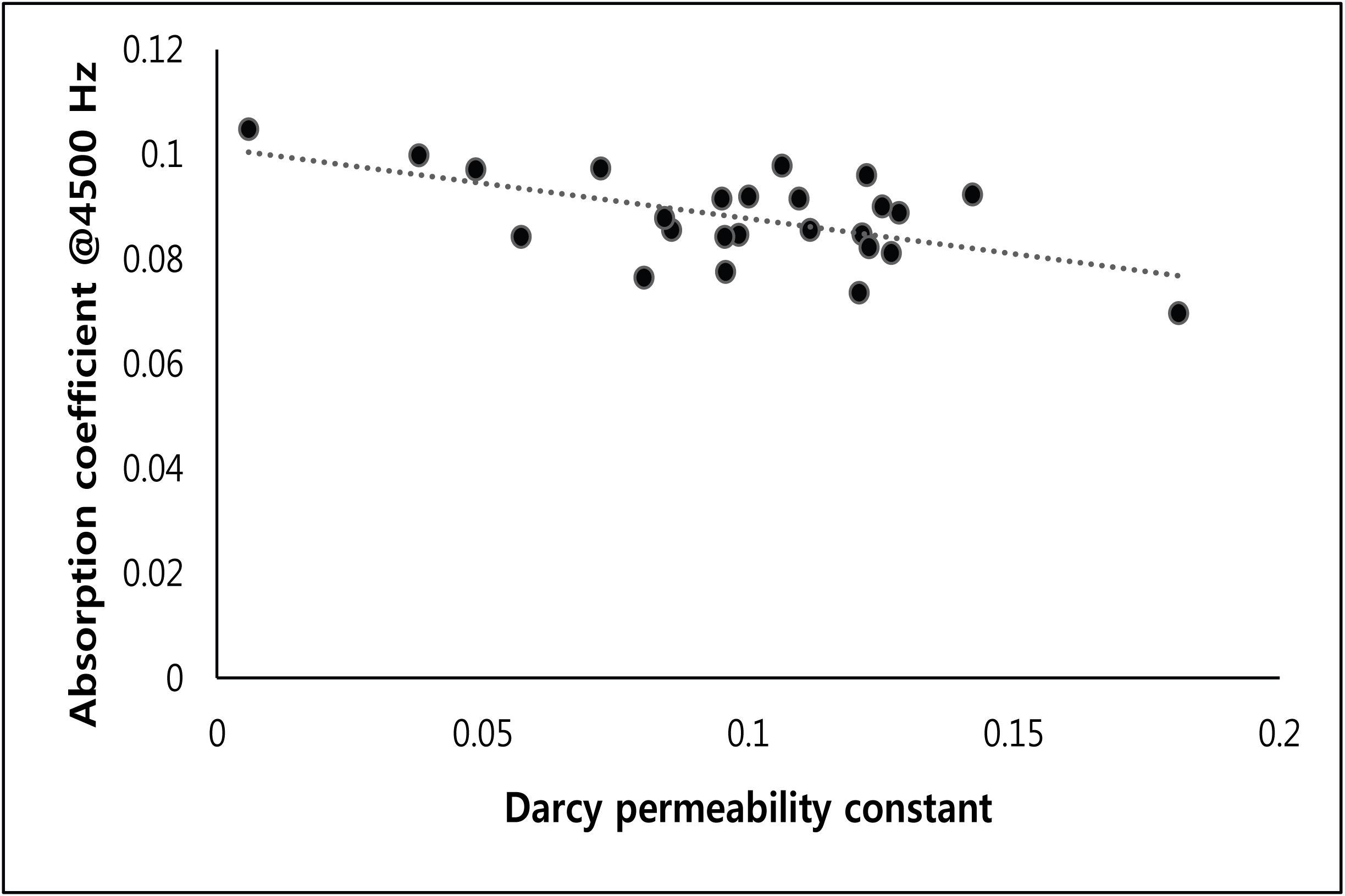
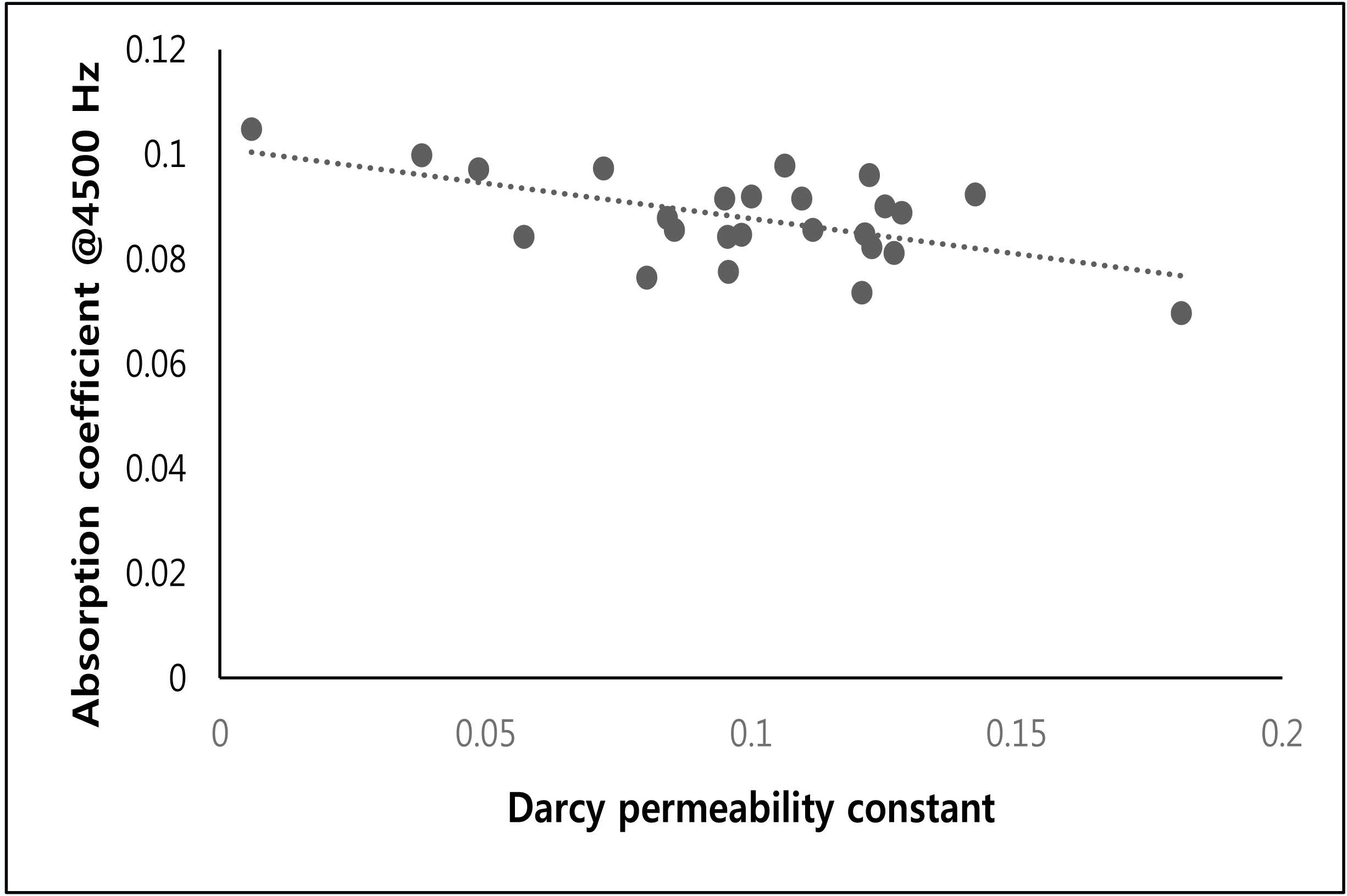
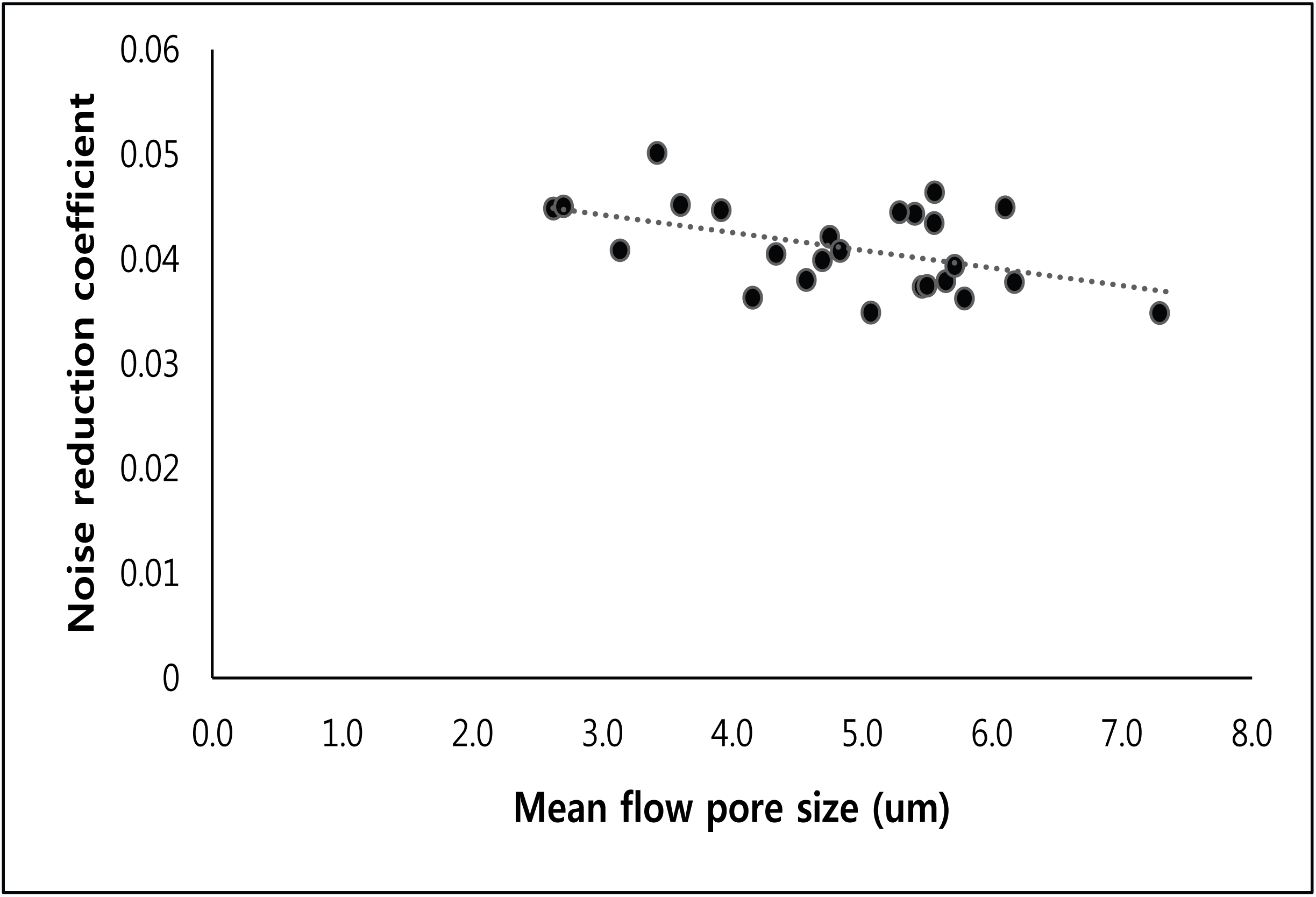
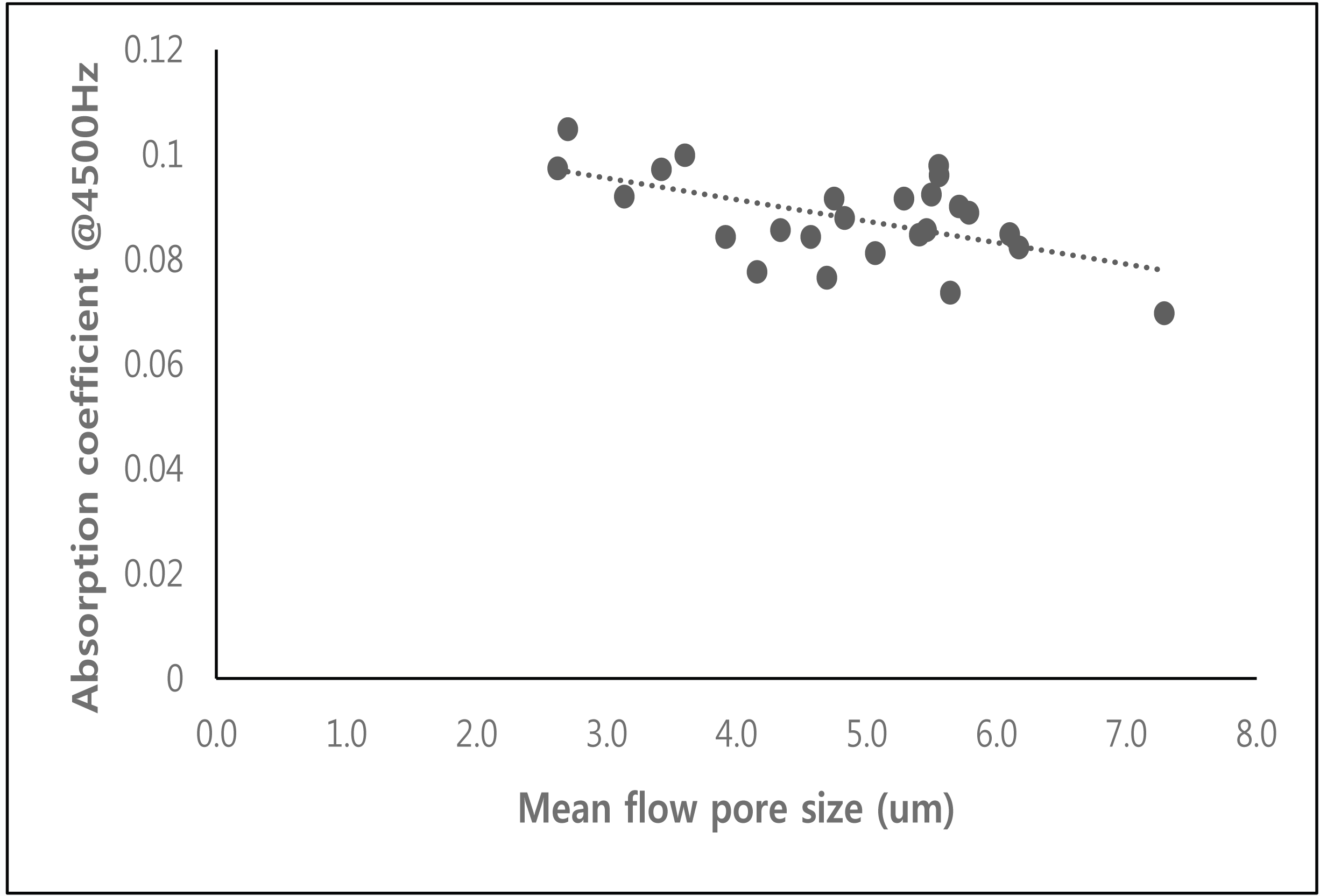
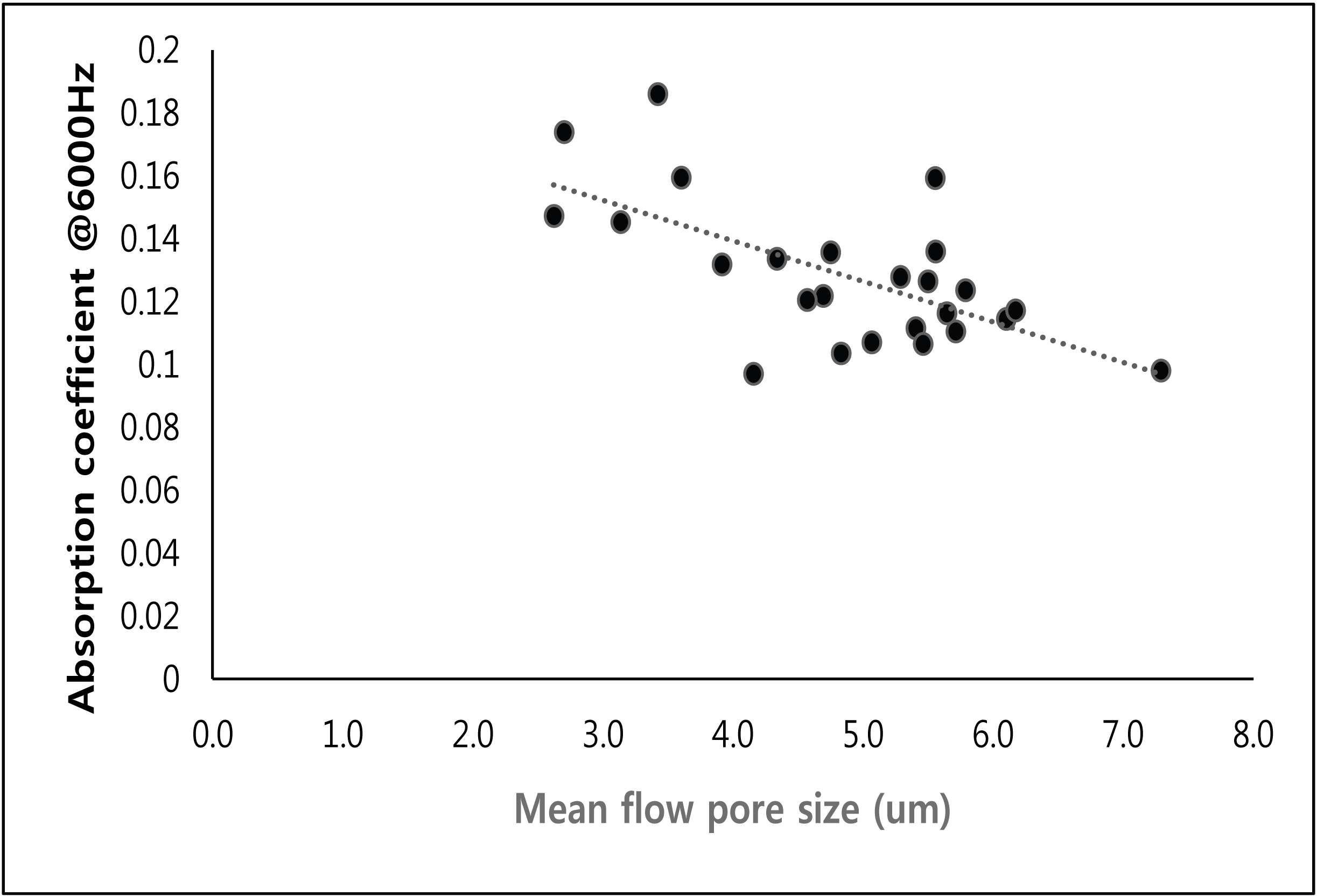
It was reported that the high calendering temperature during the super calendering process of Hanji paper can increase the fiber density and decrease the pore size of the surface (Hwang et al., 2016). It is considered that the process improvement in the production of Korean wallpaper can improve the sound absorption property of wallpaper.
4. CONCLUSION
The sound absorption rate, hand feel, air permeability and pore size of Hanji wallpapers were measured in order to improve the sound absorption property of Hanji wallpapers in this study. The results of this study were as follows:
The sound absorption rate of Hanji wallpaper was increased from low frequency band to high frequency band, this tendency showed obviously above 3 kHz frequency.
The sound absorption rate of Hanji wallpaper was increasing as the permeability being lower and the pore size being smaller.
The correlation between hand feel and sound absorption rate did not be found.









